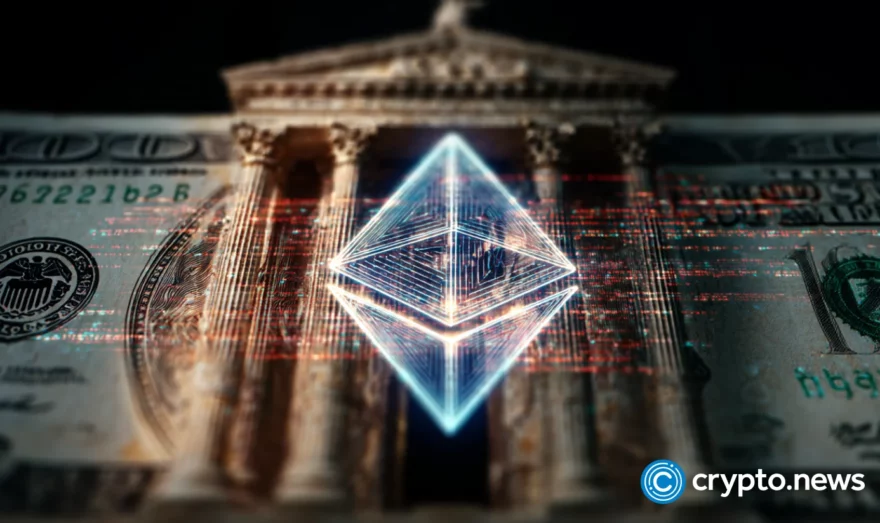Ethereum Node and Client: A Complete Guide

Ethereum nodes and clients play a pivotal role in the ongoing transformation of the crypto landscape. Ethereum, a cryptocurrency that has captured the attention of enthusiasts for months, is poised to surpass Bitcoin as the industry’s leading digital currency. Vitalik Buterin, the visionary creator of Ethereum, and the dedicated team of developers have been diligently working on a series of upgrades leading up to the eagerly anticipated main merge.
Ethereum nodes and clients form the backbone of this groundbreaking network. They are responsible for validating transactions, executing smart contracts, and ensuring the overall security and decentralization of the Ethereum ecosystem. In this article, we will delve deeper into the world of Ethereum nodes and clients, exploring their significance, functionality, and integral role in shaping the future of blockchain technology.
Table of Contents
The Origin Story of Ethereum
In 2014, Vitalik Buterin published a white paper introducing Ethereum. The following year, 2015, saw the launch of the Ethereum platform by Buterin and Joe Lubin. Joe is also the founder of ConsenSys – a blockchain software company.
Ethereum has changed and improved a lot since it was first created, and all of these changes have led to one goal: making Ethereum the best crypto blockchain on the internet. Its operations are insanely good, and investors can trust that they are investing in a good project.
Its ecosystem is made up of a variety of different specifications. Let’s take a look at some of its finest features: Ethereum Nodes and Clients.
The Ethereum Ecosystem
In simple terms, Ethereum is a decentralized platform that runs smart contracts. Smart contracts are basically application code that is executed and verified by the network. Ethereum has become the go-to platform for DeFi (decentralized finance) and NFTs (non-fungible tokens).
Ethereum was created to be scalable, programmable, secure, and decentralized. It’s the blockchain of choice for those who are creating technology on top of it. This blockchain is essential for these DeFi applications to develop and bring about a financial revolution.
Ethereum provides a highly flexible platform on which developers can create dApps using the native Solidity programming language and Ethereum Virtual Machine. The founders of Ethereum saw blockchain technology’s potential for more than just creating a secure virtual payment method. Now, Ethereum is changing from proof-of-work (PoW) to proof-of-stake (PoS).
What Is an Ethereum node?
A node on the Ethereum network is any computer that runs the software required to interact with it. Nodes communicate with one another to validate transactions and store data about the blockchain’s state.
Depending on your needs, whether a dApp or a wallet, any client can run three types of nodes: full, light, and archive. Each node will uniquely evaluate data and provide various synchronization methods. This refers to how quickly your node can get new information so that you can use it.
- Full Nodes: Full nodes are jam-packed with data. They keep and distribute all of the blockchain data from the Ethereum network. A full node will also participate in block validation.
A full node can interact directly with any smart contract on a public blockchain. In addition, nodes can also deploy new smart contracts onto the same type of blockchain. However, running a full node may be costly in terms of hardware and bandwidth. Obtaining all of the data can be very time-consuming.
- Light Nodes: Light nodes are similar to full nodes. However, they handle significantly less information. The light node keeps track of the header chain. This is the most basic information in a block, such as a timestamp and the previous block’s hash.
Light nodes are blockchain clients that only request data as needed. They can verify the validity of data, but they don’t participate in block validation. Remote clients often use light nodes.
- Archive Nodes: A archive node is a node that keeps all of the data that a full node does and creates an archive of past blockchain states. Even after a client has finished synchronizing, archive nodes will store historical data.
On the other hand, full and light nodes will “prune” the historical blockchain data. This means they can rebuild it but do not retain this information. Archive nodes may not be of much use to the average user. However, they’ve been instrumental in creating block explorers, wallet providers, and chain analytics applications.
What Are Clients in Ethereum?
In computing, a “client” is software downloaded to your computer that helps you interact with another type of software or service provided by a server. An Ethereum client is a program that enables Ethereum nodes to read blocks on the Ethereum blockchain and smart contracts. You’ll need to download an Ethereum client software to run a node.
With Ethereum, many different clients can be created using various programming languages. However, they all follow the same protocol and rules. This allows them to interact with each other on the Ethereum network.
The most popular functions of Ethereum clients include transaction and mining interfaces, but their applications extend far beyond basic blockchain operations. The Ethereum Foundation maintains the following Ethereum clients:
- Geth (Go)
- OpenEthereum (Rust)
- Nethermind (C#, .NET)
- Besu (Java)
- Erigon (Go/Multi)
If the Ethereum Foundation doesn’t support your go-to programming language, don’t worry–numerous third-party Ethereum clients can provide you with the language support you need. There are 3 types of Ethereum clients.
- Full Client: Full clients enable any node on the network to complete all tasks, such as mining, transactions, validating block headers, and running smart contracts.
- Light Client: Light clients are a subset of client functionality. Because they do not keep the entire Ethereum blockchain, light clients can offer quicker speeds and free up data storage space over full clients.
- Remote Client: A remote client is a third kind of client that resembles a light client. The primary distinction is that a remote client does not keep its copy of the blockchain and does not validate transactions or block headers.
Rather than running a full client, remote clients simply connect to the Ethereum blockchain network via a light or full client. These clients are most often used as wallets for sending and receiving transactions.
The Difference Between Ethereum Nodes and Clients?
Although nodes and clients are often used interchangeably, they serve different purposes in accessing the Ethereum network. It may help to think of nodes and clients like a computer accessing the internet: the node would be an operating system, such as Windows or iOS, while the client is the physical computer.
You can tap into the node operating system using a client computer. From there, you gain access to the internet–regardless of which type of computer or operating system you use.
Bottom Line
Nodes and clients are frequently equated, although they are not the same thing. The Clients and Nodes play vital roles in keeping the Ethereum blockchain functioning correctly. In short, an Ethereum node and client depend on each other to keep the Ethereum network functioning.
What is an Ethereum Node?
An Ethereum node is a computer program designed to run blockchain software. The nodes keep track of transactions that occur across the network. When someone creates a smart contract, the transaction information is stored in each node’s local database. If all the nodes agree about which version of the smart contract was executed, then it gets recorded permanently in the global ledger.
Where can I buy Ethereum?
The easiest way to purchase cryptocurrencies such as Bitcoin and Ethereum is through an exchange, which allows users to convert fiat money into digital currencies. These exchanges include Coinbase, Kraken, Bittrex, etc.
What is a Blockchain Smart Contract?
A smart contract is a digital record created through blockchain technology with two main characteristics: 1) it cannot be changed unilaterally, and 2) it contains information about who owns what property and who must fulfill what obligations when certain events occur. Blockchain smart contracts are immutable, meaning they cannot be altered after they have been created; however, they can be updated at any point and still exist independently of changes made to previous versions. This technology allows for the creation of self-sustaining autonomous systems that function outside a central authority’s control.














